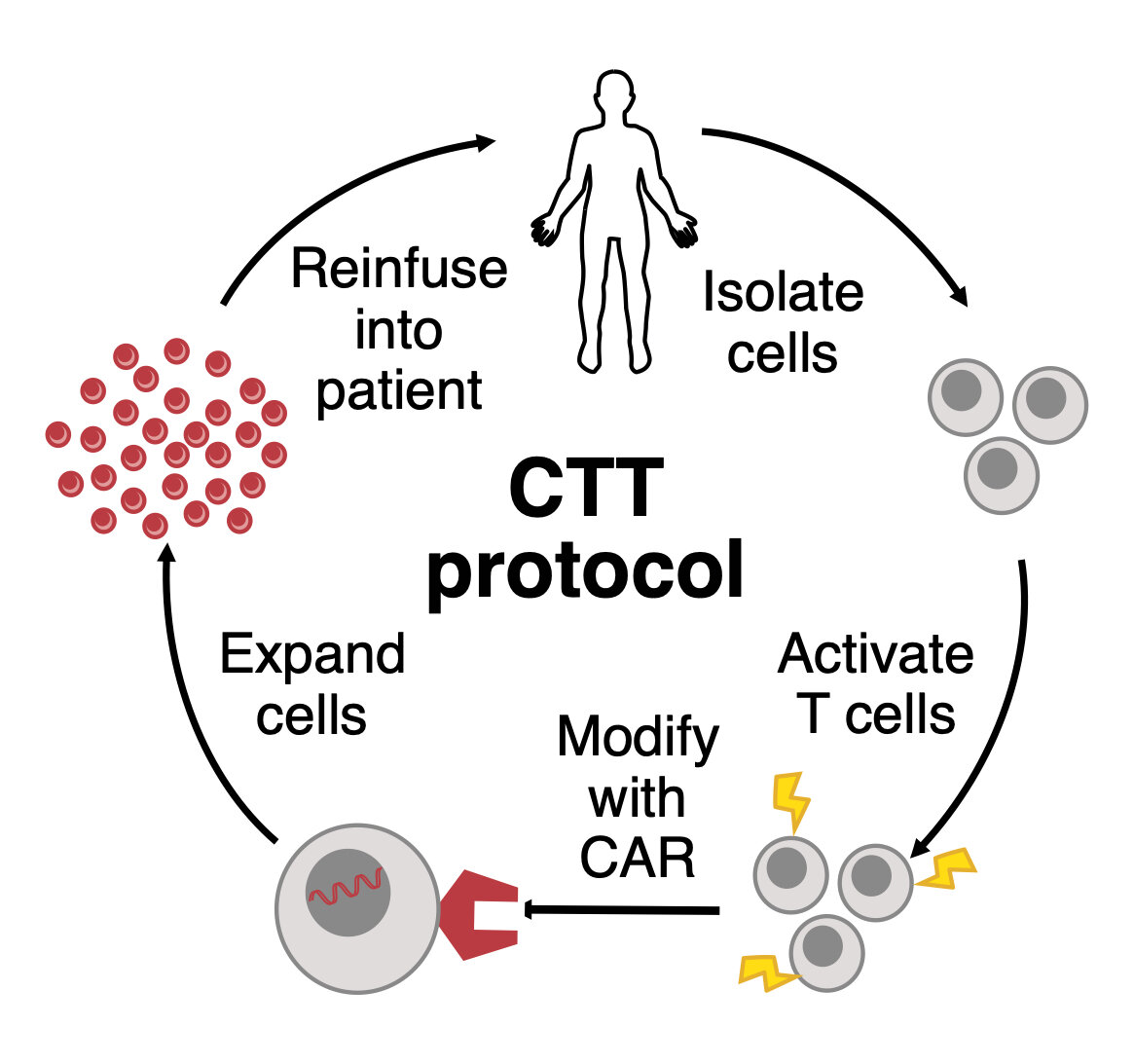Our Projects
“As we age, our immune system changes- making us more vulnerable to cancer and infections. In our work, we are designing immunotherapies specifically for older people.”
Electron micrograph image of a CD8 “Killer” T cell
T Cells & Ageing
T cells can be divided into 2 main types: CD8 "killer" T cells and CD4 "helper" T cells. Once activated, CD8 T cells kill infected or cancerous cells in a highly targeted way. CD4 T cells produce cytokines to enhance the activation of CD8 T cells and other immune cells.
As we get older, we start to see increased rates of cancer and infections and decreased vaccine efficacy. This is, in part, due to the fact that our T cells change with age and decline in some key functions, such as their ability to divide, produce cytokines and kill infected or cancerous cells. We are defining the molecular mechanisms that cause this decline and using this knowledge to improve immune-based therapies, such as vaccination and CAR T cell therapy.
Metabolism & Ageing
To survive in the aged environment and to become activated after stimulation, T cells need to engage very specific metabolic pathways. These pathways are critical to provide both energy for the cell and the basic building blocks for essential cellular molecules like new DNA, RNA, proteins and lipids, but metabolism is deeply intertwined with the ageing process.
As we age, the ability of cells to engage these specific metabolic pathways shifts. This means that a cell may not have sufficient access to energy or building blocks to support specific functions. We are currently exploring how metabolic changes can limit T cell function with age.
Confocal image of a CD8 T cell and staining of the nucleus (DAPI:blue) and mitochondria (Tom20:green). With credit to Felix Kraus.
Schematic of the current CAR T cell therapy protocol
CAR T Cell Therapy & Ageing
CAR T cell therapy is a new type of immunotherapy that is being used to control and even eliminate blood cancers. In this therapy, a patient's own T cells are genetically modified with a cancer-seeking receptor, activated and expanded in the lab and then reinfused into the patient, where they eliminate cancerous cells.
As we get older, our T cells become more difficult to activate. This means that the quantity and quality of T cells generated using cells from older patients can be lower than younger patients and this may limit the success of CAR T cell therapy. We are currently testing ways to tailor CAR T cell therapy protocols specifically for the immune systems of older patients.
Vaccines & Ageing
Vaccines are one of the oldest forms of immunotherapy that can be used to prevent or reduce the impact of a wide range of infections. Traditional vaccine designs often provide lower levels of protection for older individuals and even more modern designs rolled out during the COVID-19 pandemic have been less protective for older groups.
A handful of vaccines have been released for older people but these generally work by delivering a higher vaccine dose or a “stronger” adjuvant, rather than using an age-specific vaccine design. We are evaluating how different vaccines trigger innate and adaptive immune mechanisms in the aged immune system in order to select and design optimal vaccines for older people.
Confocal image of a CD8 T cell and staining of the nucleus (DAPI:blue) and mitochondria (Tom20:green). With credit to Felix Kraus.



